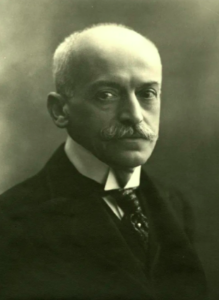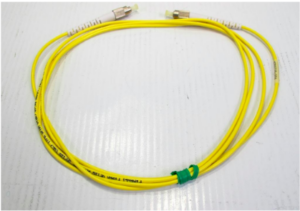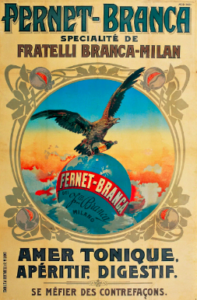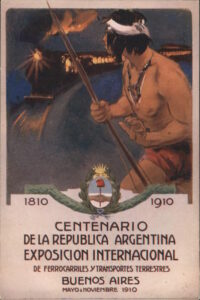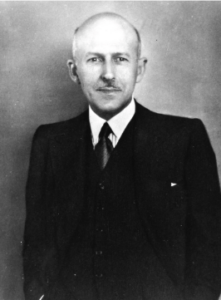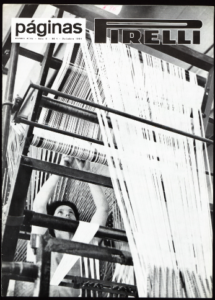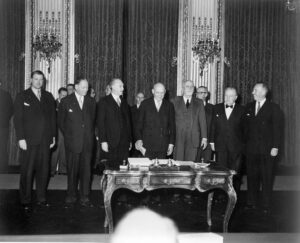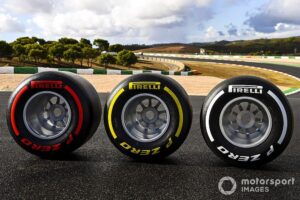The Pirelli company, or Pirelli & C. S.p.A., was founded on Sunday, January 28, 1872, by Giovanni Battista Pirelli in Milan to produce elastic rubber items. At the moment of founding, Battista was a twenty-four-year-old graduate of The Polytechnic University of Milan with a realization that rubber would be one of the most important commodities in the rapidly industrializing Italy. (“Pirelli & C. S.P.A.”) These items included: rubber bands, vulcanized items, rubberized fabrics, scuba diving rebreathers, and other rubberized items. In addition, the move was to combat the pressures from the French market of rubber watering hoses (“Alberto Pirelli Is Dead at 89). After participating in the International Centenary Exposition in Buenos Aires, in 1910 the company opened their first commercial foreign branch in Calle Esmeralda 940 within Argentina’s capital city of Buenos Aires. The company has seen continuous growth in Argentina, which I will cover later in my paper. Only twelve years later the company was listed on the Borsa italiana (La Borsa) in Milan and within the same year was also listed on the New York Stock Exchange (NYSE) (“PIRELLI | About Us.”) Pirelli was the first Italian company ever to be listed on a stock exchange within the United States. The public limited company or [PLC] had revenues of €4.3 billion in 2022 with a TTM [trailing twelve months] gross revenue of €4.267 billion. The trailing twelve months unit of measurement is the “past 12 consecutive months of a company’s performance data used for reporting financial figures” (“Trailing Twelve Months (TTM)). The firm manages eighteen plants in twelve countries over four continents with “a view to environmental efficiency and respect for biodiversity.” (2022 Pirelli Annual Report)
Giovanni Battista Pirelli
Jacopo Virgilio, “an important liberal economist” and “one of the most eloquent supporters of free emigration during the post-unification period,” furthering the strong ties between their mother country of Italy and Argentina (Pagano 11). Virgilio’s support of “free emigration” added to the love for Argentina and the growth of the nation (Pagano 5). The intellectual’s ideas were largely linked to the importance of Italian emigration dissenting from Camillo Cavour, the Italian prime minister’s, main idea that Argentina should attract more immigrants from the port of Genoa from those, “who were transiting through other ports in northern Europe” (Pagano 19). Virgilio’s expressive enthusiasm about the future of Argentina radiated throughout the country as he thought “[immigrants should] aim toward Argentina and the Río de la Plata region because, in other areas in Central America and Brazil, the tropical climate makes it very hard for Italians to adjust;” (Pagano 19). Argentina offered both opportunities for all in cities and in the countryside, therefore fostering a positive environment that would become the future and the legacy of Río de la Plata. In addition, Luigi Einaudi, “a professor of political economy at the University of Turin, who became the first elected president of the Italian Republic in 1948 was an instrumental figure in the Italian capitalist expansion in Latin America (Pagano 85). Einaudi’s book named Un principe mercante: Studio sulla espansione italiana shows how the famous British slogan “The trade follows the flag,” demonstrates how commerce because of colonialism can sometimes be deceiving. (Pagano 86). Einaudi’s envision of creating an Italian university in Argentina that “la quale sia un centro ed un faro luminoso della cultura e della civiltà nostra in mezzo alla popolazione di origine italiana” (that will be a center and a bright light- house among our population of Italian origins) (Pagano 91). The pursuit of developing a new Argentina equipped with the ability to conquer the newest of challenges can be attributed to Einaudi’s and Virgilio’s imagination and hopes of what Argentina would become.
After learning about the Pirelli company, let’s learn more about the economic situation of Argentina. Throughout time, Argentina’s history was aided by a variety of foreign investments up to the First World War. For example, in 1870 in Argentina 60% of investments in international capital were, “in the form of financing of loans to governments and for infrastructure works.” (Ronchi 1). The country’s economy was backed by close ties to Britain with this so-called, “informal empire” (Ronchi 1). British long-term foreign investment was so large that it accounted for 43% of the total world in 1914 and then just over 70% made up the “dominions”, the portion of the world that made up India, Latin America, and other underdeveloped countries. From the turn of the century to the First World War it is reported that “close to half of the fixed–capital formation in Argentina was foreign-financed” (Ronchi 1). It was such a large factor in the country’s economic growth that in 1913, “the total of long-term foreign investment in Argentina was about half the value of the country’s fixed-capital stock” (Ronchi 1). The United States and Italy made up less than 1% of foreign capital. Not until later in the 19th and 20th centuries did countries like Argentina, Brazil, Mexico, Uruguay, and Chile finance their economies based on aggressive policies around foreign debt to create strong ties between oligarchies and central countries. The company was in fact one of the three Italian enterprises that invested abroad prior to 1914 to have operations in several countries.
New Pirelli Fiber Optic Cable
Mr. Battista’s role within the Pirelli company was largely influential in the Italian market. In 1898 in Buenos Aires, Giovanni Battista Pirelli reorganized the Buenos Aires area, “by appointing a sole representative: Alvaro Company, who was also appointed to represent the company in the foreign markets of Uruguay and Paraguay and to continue to act as agent for the southern states of Brazil” (Ronchi 10). The company was asked by Pirelli to represent the firm for all articles of, “electric threads and tyres, as well as the miscellaneous products” (Ronchi 10). 1910 marked a significant change in market trends as the automobile industry was on the rise. Regarding the Argentina branch, Giovanni Battista Pirelli was tasked to choose between three options. One idea would be to, “conclude an exclusive agreement with a major company, with their commitment (to achieve) a high turnover” (Ronchi 14). The second option was to cancel all retail sales and allow for the creation of positive relationships between wholesalers. A third option included the second hypothesis with an intense advertising campaign that personally addressed consumers and then directed them to wholesalers for purchasing products. Even though many options were on the table, the best option was to produce the best tyres along with providing the best customer service. While some order shipping difficulties happened, orders began to increase and the Pirelli sales branch was opened in 1911 in Buenos Aires, Argentina (Ronchi 15). Mr. Alfredo Gessaroli acted as the branch manager after being previously employed by the Milan branch. Prospects for tyre sales were particularly positive as the branch amassed sales of half a million in 1911 (Ronchi 16). In 2021, the portion of the business celebrated its 100th year in business with the opening of a motorcycle product tyre division and significant investments into the future of the Merlo plant. The firm planned to invest $100 million by 2013 into the plant. 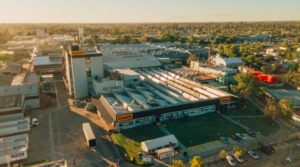
Pirelli’s Plant in Merlo, Argentina
The World Fair of 1910 had the potential for company growth within Argentina. The large propaganda campaign instigated by The National Committee for World Fairs and Foreign Exports regarding Italian exports abroad was joined by a variety of Italian industrialists. Their cogent arguments towards the committee, “brought the total goods on show to 1700 packages weighing a total of 407 tons” (Ronchi 17). Two inquiries by the secretary general of the Italian committee and the Regio Commissario Generale d’Italia (The Royal Commissar General of Italy) were persuasive enough to incentivize the passage in September 1909. While the committee was already focused on organizing The Brussels International Trade Fair in April 1910, the goal was an “institutional commitment was to incentivize mutual respect and economic links between Italy and Argentina and “reveal the plethora of Italian ingenuity and labour” (Ronchi 17). The connection between the two countries would lead to an increase in economic growth and foster a cohesive atmosphere for institutional development. From reports in the years prior, Italian industrialists were reluctant to participate in the world fair for two distinct reasons. The first one being that retail sales of products, specifically food products, were already accessible to the masses. The second was that it made no sense to showcase technologically advanced products because after the sale the products were, “not immediately receivable” (Ronchi 17). The National Committee for World Fairs and Foreign Exports asked, “Pirelli to participate for chemistry in the Buenos Aires Exposición Internacional” in 1910 for “its industrial products and applications, and how it related to other enterprises, including Branca” (Ronchi 17). The Branca company produces the famous alcoholic beverage named Fernet-Branca. The drink was invented in 1845 by Bernardino Branca (An Amaro That Will”).
Fernet-Branca’s first advertisement in 1865 which appeared in the daily newspaper “La Perseveranza”
Postcard of the 1910 Centenario de la Republica Aergentina Exposicion Internacional in Buenos Aires Argentina
In preparation for the world fair, a letter dated June 4th, 1909, the Alvero Company notified Pirelli that the exposure would largely impact the business in a positive way through, “broadening its visibility in the whole of South America and urging the company to participate” (Ronchi 17). Alberto Pirelli, the son of the company’s original founder Giovanni Battista Pirelli, urged the Alvero Company to, “undertake a special initiative” to ensure that almost all the automobiles or bicycles to be on show in the Italian section “would have our tyres”, with a direct initiative to the manufacturers, ahead of their accessory representatives “to ensure that the product on show is Italian – including the accessories it is concerned with” (Ronchi 17). This helped Pirelli gain international exposure and boost company-wide sales within the Argentina branch. The fair was instrumental for the Pirelli Company, giving them the many business relationships, they needed to take Pirelli to the next level.
Alberto Pirelli, Giovanni Battista Pirelli’s Son
The fair fueled the businesses’ operations and resulted in a series of awards for the business. Later, “a warehouse for automobile tyres and cables only was annexed to the branch, which undertook not to make sales outside its area, and Company was made responsible for identifying the quantities and assortment of goods to ship, the maintenance and storage of the tyres, which had no guaranteed service life” (Ronchi 19). In 1917, “Pirelli on the Plate” began the production of cables, tyres, and natural rubber products with a total of twenty-four employees. It was the first enterprise of the Group in the Americas as well as the first Italian multinational enterprise in Argentina. Once again for this enterprise direct foreign investments were extremely important due to economies of production, technical knowledge, and international marketing conditions. In her article, Ronchi wrote, “Corporations huge enough, and few enough, to be able to allow innovations of a technical nature to play a leading role in the evolution of a particular industrial sector, while at the same time, they are subject to the pressure of competition that can push them forward” highlighting the complications of large corporations (Ronchi 22). The Pirelli Company reflected on this quote, “to the extent that other factors will inevitably be built in other countries if for no other reason than customs tariffs, it is better to assume control rather than lose markets” (Ronchi 22). Pirelli did just that by opening their first factory in 1917 which was followed by another that produced miscellaneous rubber articles. Five years later in 1921, the company opened a cable factory in Donato Alvarez, a province of Buenos Aires. In 1930, a larger factory named, “La Rosa” was built in Buenos Aires for the explicit production of tyre manufacturing, underground cable production, and a copper rolling mill. The company began increasing production and proving to the Argentinian people that Pirelli was here to stay. As the company was making great strides, the best was yet to come.
Buenos Aires, Argentina at Night
When the first publication of Pàginas Pirelli, 1955-1975, was officially published in 1955, “only five years after the Italian house organ “Fatti e Notizie,” the Italian economy was experiencing massive development. With the two, “Pirelli Saic-Sociedad Anonima Industrial y Comercial” factories near the area of Buenos Aires, the company was already in the process of the “local production of tyres” (Un Compleanno Internazionale). 1950 was a significant year because the production of tyres was transferred to Merlo, therefore allowing more room to maximize operations across the company. In 1951, the Pirelli Company’s “Coplan-Compañia Platense de Naumàticos” the joint venture with the American “U.S. Rubber” produced the first tyres in Merlo, Argentina, only 30 kilometres (about 18.64 mi) from Buenos Aires (Un Compleanno Internazionale). This plan that the company instigated created space for growth within the Argentinian market. The production of the Cinturato tyre was going to be a large part of the business when it really took off in 1968 after Coplan, Compañia Platense de Neumaticos, was taken over by Industrias Pirelli SAIC, a subsidiary of the Pirelli company. Pirelli was very aware of its global marketing strategy. Their own strategy was extremely important in the connection between Italy and America. We can see the influence of Pirelli’s Cinturato marketing campaign in the photo below. The marketing campaign included “the colors of the Argentina flag with associated slogan of “en Argentina se dice Cinturato” or “in Argentina, we say Cinturato” demonstrating the trust in the Pirelli Company (“Pirelli, an Italian in the World).
Cover a Pàginas Pirelli magazine
After the Second World War, the economic boom, from 1958 to 1963, was happening in Italy like in Argentina. The economic reconstruction was followed by a large economic growth from 1950 to 1963. For example, the gross domestic product, or GDP, rose by 5.9% reaching its peak of 6.1% in 1961. The growth of the automobile industry in Argentina was like the one in Italy and the Italian industry dominated the world markets. The European market was overwhelmed by Fiat until 1963 with an economic slowdown. Ten years later a surge in the price of oil sent shocks throughout the economy. From the start, Italy was a proponent of European integration. We can see this connection in Argentina in the importance of Italian immigration and the value of capital investments from abroad. Together with the help of the Marshall Plan, an American plan to assist the economies of Western Europe after World War II, the foundation of the European Coal and Steel Community (ECSC) in 1952 fueled the growth of neighbouring countries, especially Italy. The steel industry became the foundation of the Italian metallurgic and engineering industries. (“Postwar Economic Development”)
The European Coal and Steel Community (ECSC) in 1952
With efforts to consolidate company operations in Argentina in the Merlo factory, revenues in 2010 were $365 million, up 55% from 2009. The goal in Argentina was to hit $500 million in revenue by 2013. Annual production capacity was projected to hit 6 million from 5 million a year prior. Even after the complications of the 2009 economic crisis, the Argentinian market experienced increasing dynamism and strength linked to performance from companies in the internal market like Ford, Renault, Volkswagen, and Toyota. Today, Pirelli has grown to be one of the world leaders in tyre production. In the past few years, hyperinflation in Argentina has risen to new highs, impacting business operations. Since 2011, The Pirelli Company has been the sole provider of tyres for Formula 1™. In the third quarter of 2018, the accumulated inflation rate over the last three years exceeded 100%. In July of 2018, the Pirelli Company adopted the IAS 29 accounting standard for the company’s subsidiary in Argentina named Pirelli Neumáticos S.A.I.C. (2022 Pirelli Annual Report) The IAS 29 accounting standard requires that any financial statements that are operating within the currency of a hyperinflationary economy to be reinstated for changes in purchasing. Therefore, more meaningful financial statements can be provided in a hyperinflationary economy. Countries whose functional currency is one which is impacted by a hyperinflationary economy should utilize the IAS 29 account standard. These countries include Iran, Lebanon, Zimbabwe, and Venezuela. (“IFRS Alert”). Even while immigration was decreasing in Argentina during the sixties and the seventies, Italian companies kept investing in the future of the country. Non-Italian foreign investments and Italian foreign investments helped Argentina develop a global presence, therefore continuing the protection of Italianità. In 1962, Argentina’s gross domestic product was $24.25 billion (about $75 per person in Argentina) and in 2021 GDP levels hit $487.23 billion (about $1,500 per person in Argentina) showcasing the country’s economic growth over time. (“Argentina GDP”)
Pirelli Formula 1™ Tyres
Pirelli in Argentina (Italian Version)

